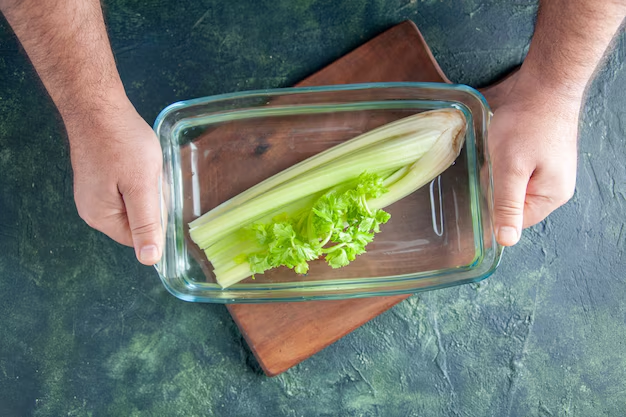Mastering Vegetable Preservation: Prolonging Freshness in Your Refrigerator
Keeping vegetables fresh and vibrant for as long as possible in your fridge might seem like a daunting task. However, with a few simple strategies, you can maintain their crunch and flavor for an extended period. This article delves into practical tips and tricks designed to help you preserve vegetables effectively, saving you time, money, and reducing food waste.
🥦 The Basics of Vegetable Storage
Understanding Temperature and Humidity
Every vegetable has a preferred climate. Understanding the ideal storage conditions for your produce is crucial. Most refrigerators come with crisper drawers that are designed to manage humidity.
- High Humidity: Best for leafy greens, carrots, and broccoli. The high moisture level helps prevent wilting.
- Low Humidity: Suitable for fruits and vegetables prone to rotting. This includes peppers, mushrooms, and cucumbers.
The Right Temperature
Vegetables generally thrive in a cooler environment. Setting your refrigerator’s temperature between 32 to 40°F can significantly slow down the spoilage process.
🥬 Tips for Storing Common Vegetables
Leafy Greens
Leafy greens like lettuce, kale, and spinach tend to wilt rapidly.
- Wash and Dry: Wash greens thoroughly and use a salad spinner to remove excess water.
- Wrap in Paper Towels: Place the greens between paper towels to absorb moisture.
- Store in Air-tight Containers: This minimizes contact with the refrigerator’s dry air.
Root Vegetables
Carrots, beets, and radishes benefit from proper cleaning and storage.
- Trim Greens: Cut off any leafy tops as they can draw out moisture.
- Sand Storage: For long-term storage, consider submerging them in sand to retain freshness.
Tomatoes
Contrary to popular belief, tomatoes don’t favor refrigeration.
- Counter Storage: Place them stem-side down on a countertop to preserve flavor, only refrigerating if they’re overripe.
🥕 Prepping Vegetables for Long-Term Storage
Blanching and Freezing
Some vegetables benefit from blanching—a quick steaming or boiling process that helps destroy bacteria and preserve color.
- Quick Boil: Place vegetables like green beans or peas in boiling water for a few minutes.
- Immediate Cooling: Quickly transfer them to ice water.
- Dry and Freeze: Pat vegetables dry and store in freezer-safe bags.
Avoiding Common Mistakes
Storing Vegetables Together
Ethylene gas is a silent culprit in the spoiling of fresh produce. Some fruits and vegetables emit this gas, which can hasten ripening.
- Separate: Keep ethylene-producing items like bananas and apples away from sensitive vegetables, such as cabbage or leafy greens.
Overpacking the Fridge
Overcrowding your fridge can reduce air circulation, leading to uneven temperatures.
- Airflow: Arrange vegetables in a way that allows cold air to circulate freely.
🥒 Utilizing the Crisper Drawer
High vs. Low Humidity Settings
High-Humidity Drawer: Ideal for vegetables that need a moist environment. Artichokes, broccoli, and cauliflower thrive here.
Low-Humidity Drawer: Optimal for items that prefer drier conditions, like bell peppers and avocados.
Emergency Measures: Reviving Wilted Vegetables
The Perk-Up Technique
For slightly wilted vegetables, such as carrots or celery, a quick soak in ice water can revive their structure.
Leafy Greens
Wilted greens may benefit from a prolonged soak in cold water, followed by draining and storage in a damp towel.
🧄 Using Containers Wisely
Select the Right Material
Opt for glass or BPA-free plastic as they are effective at maintaining freshness and preventing odors.
Vacuum-Sealed Bags
For long-term storage, vacuum sealing can effectively reduce exposure to air and delay spoilage.
🧺 Weekly Cleaning Routine
Regularly clean and organize your fridge to ensure expired items are removed and the freshest produce is easily accessible.
Visual Summary: Quick Reference Guide 📝
- Leafy Greens: Wash, dry, store in air-tight containers 🥬
- Root Vegetables: Trim, store in sand or crisper drawer 🥕
- Tomatoes: Keep out of the fridge until ripe 🍅
- Separate Ethylene Producers: Store sensitive items apart 🚫
- Blanch for Freezing: Blanch, cool, and freeze for long-term 🥶
By following these practical strategies, you're empowered to extend the life of your vegetables efficiently. A few thoughtful adjustments to your storage methods can make a world of difference, keeping your produce as fresh as the day you brought it home. With these insights, you can enjoy better quality meals and a reduction in food waste, all while saving money and time in the kitchen. 🌿
